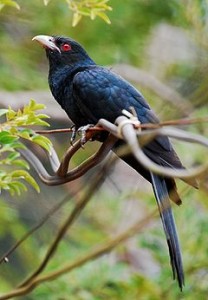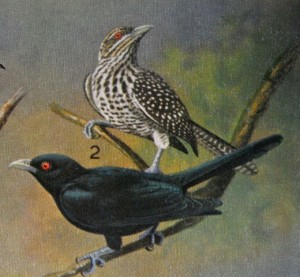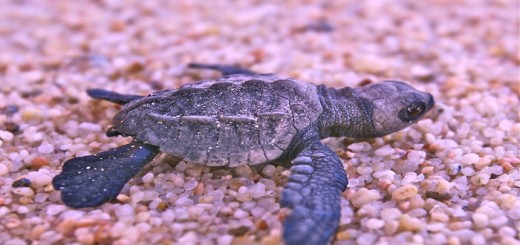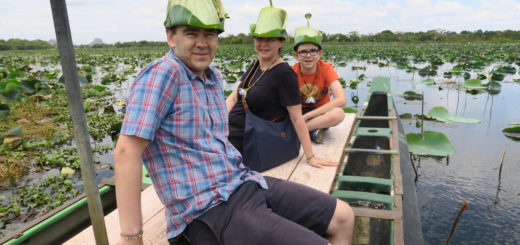SRI LANKA ROUNDABOUT (Number 7) – Sri Lanka’s Cuckoo
by · Published · Updated
 A weekly look at Sri Lanka for Jetwing by Royston Ellis
A weekly look at Sri Lanka for Jetwing by Royston Ellis
Welcome to Jetwingers around the world to this week’s issue of my regular Jetwing newsletter about Sri Lanka.
From now until August, the unmistakable, intrusive call of Sri Lanka’s cuckoo heralds the New Year season, and (as with the cuckoo announcing Spring in England), it is an essential part of nature’s seasonal ritual and chorus. This equivalent of the cuckoo both for heralding a change in season as well as for its sneaky habit of laying its eggs in other birds’ nests, is called the Koel (Eudynamys scolopaceus scolopaceus); in Sinhala known as koha and in Tamil kuyil.
The call is frequently heard at this time of the year and is a welcome sound at first. But then, the insistent and loud twoo-twoo-twoo of the bird’s call to attract a mate becomes disturbing, even though it’s actually reflecting joyful exuberance.
Koels are regular visitors to my garden by the west coast and, although I hear them whooping it up sometimes until after dark, they generally keep themselves hidden in the branches. They seem shy of photographers too.
In A Guide to the Birds of Ceylon, G M Henry writes amusingly about the bird.
“Between the Common Mynah and the House Crow in size…the koel is widely distributed throughout the low country, both wet and dry zones…Where crows are numerous, there will koels be numerous too… The flight of the koel is swift and direct, as it has need to be, for it is much persecuted by crows, apparently in retaliation for cuckolding them.”
 Henry notes that “the breeding season corresponds with that of crows, in whose nests it lays its eggs, viz: about April to August. It seems probable that the two sexes collaborate in the delicate business of introducing their eggs into the nests of their mortal enemies. The male koel, shrieking insults, dashes off, hotly pursued by the outraged crows. When the crows get back to their nest, an extra egg, very similar in general appearance to their own, has mysteriously arrived!”
Henry notes that “the breeding season corresponds with that of crows, in whose nests it lays its eggs, viz: about April to August. It seems probable that the two sexes collaborate in the delicate business of introducing their eggs into the nests of their mortal enemies. The male koel, shrieking insults, dashes off, hotly pursued by the outraged crows. When the crows get back to their nest, an extra egg, very similar in general appearance to their own, has mysteriously arrived!”
The Asian koel is omnivorous, thriving on insects, caterpillars, eggs and small vertebrates. Adults feed mainly on fruit. They have been known to take eggs of small birds, even while they leave their own eggs in a bird’s nest.
As I am typing this, the noise of the koel’s cry is commanding attention and brings anticipation of holiday cheerfulness because it means New Year is upon us with ceremonial rituals, games and family fun.
The word “koel” is said to be onomatopoeic in origin, as is its English equivalent “cuckoo,” being imitative of that bird’s call. References to the koel are common in folklore because of its distinctive, seasonal song, and the bird is traditionally held in high regard. Sanskrit literature from about 2000BC refers to it as Anya-Vapa, which translates as “that which was raised by others.” This shows that ancient ornithologists well understood the nature of the bird.
Royston Ellis (www.roystonellis.com) is a British author resident in Sri Lanka since 1980.




